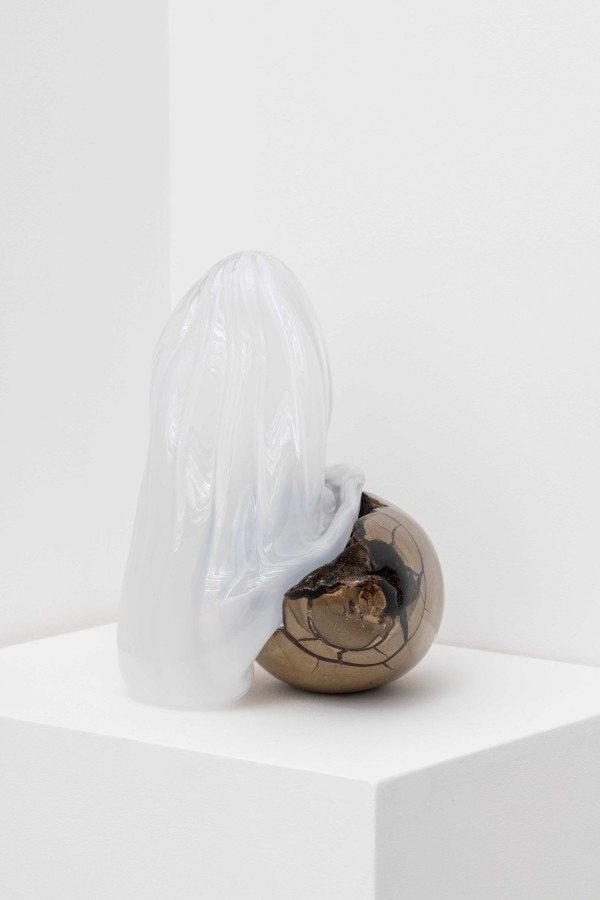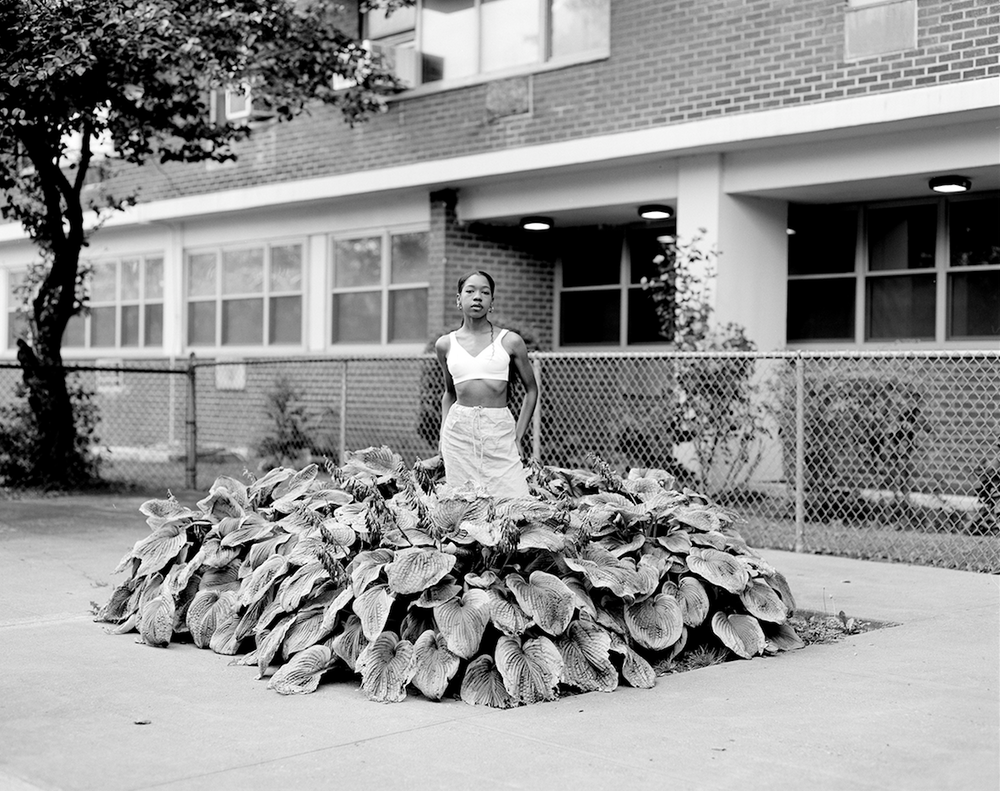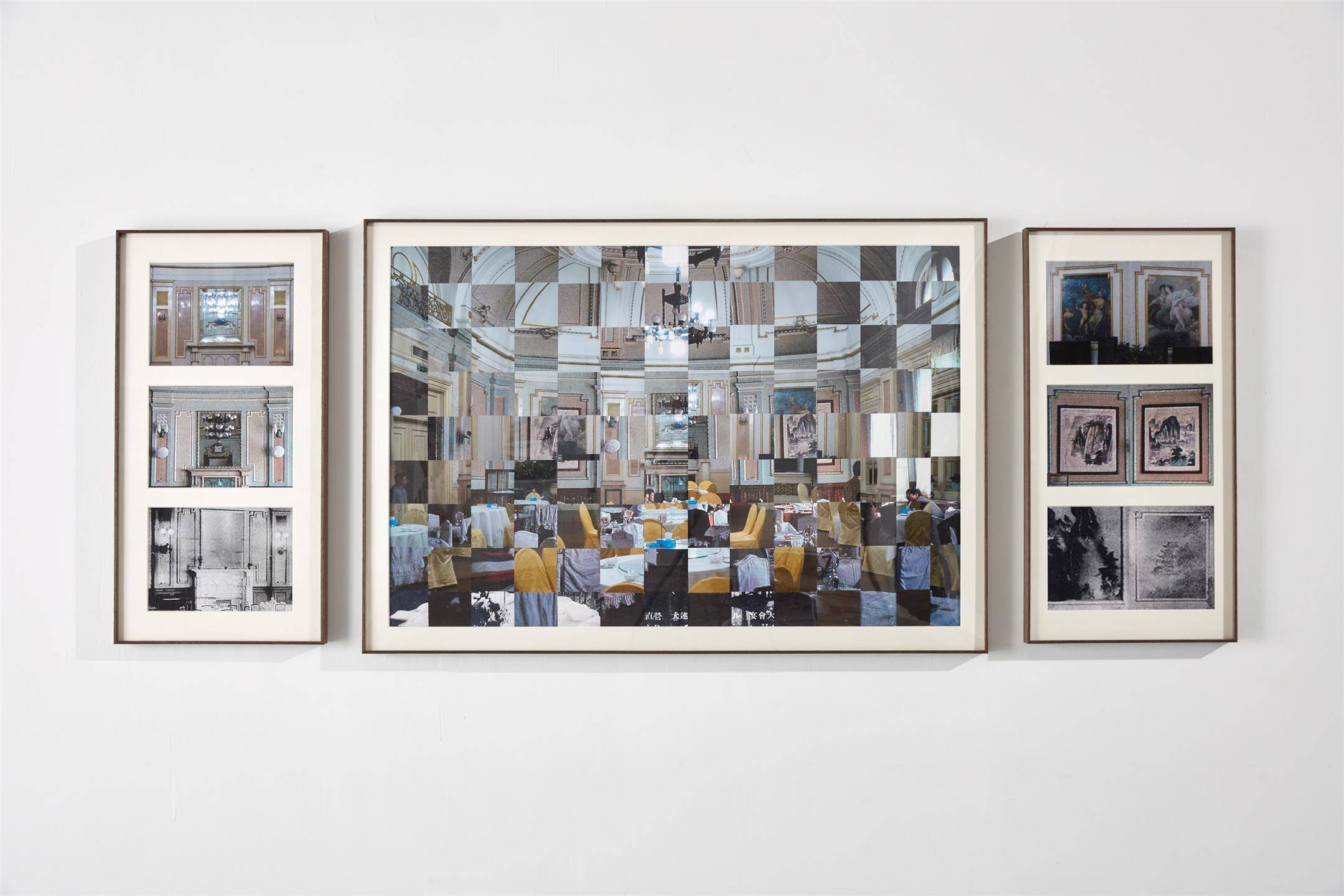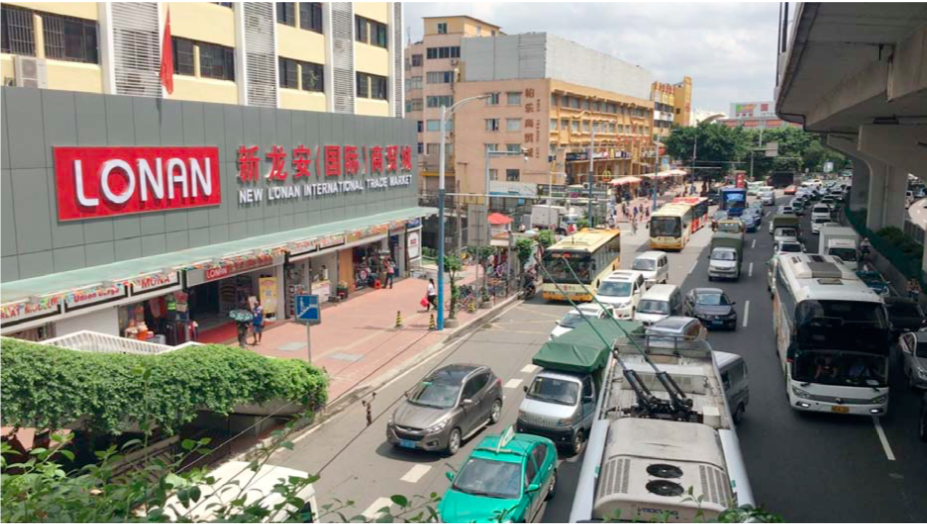
© » KADIST
Elena Tejada-Herrera
Las Bambas by Elena Tejada-Herrera takes the name of a copper mine in the Andean department of Apurímac, Peru. The operations of this mining project were resisted by the local peasant communities, whose protests forced it to paralyze its operations. As of 2023, this is the most serious unresolved social conflict in the country.

© » KADIST
Carolyn Lazard
Between 1951 and 1974, Dr. Albert M. Kligman, a professor of dermatology at the University of Pennsylvania, oversaw medical experiments conducted on incarcerated people at Holmesburg Prison in Philadelphia. These nontherapeutic tests ranged from athlete’s foot powders, dandruff shampoos, deodorants, and detergents, as well as more hazardous materials such as dioxin, radioactive isotopes, and mind-altering psychotropics. During his tenure at Holmesburg, Dr. Kligman worked for companies such as Johnson & Johnson, developing the acne medicine Retin-A, and for Dow Chemical Company and the U. S. Department of Defence, testing the ‘tactical herbicide’ Agent Orange.

© » KADIST
Claudia Martínez Garay
escenario chacana by Claudia Martínez Garay is a sculptural work composed of a frame-like structure that contains a series of ceramic pieces. It references the Chakana, an Andean cross that encompasses the different levels of existence (known as Pachas) and sacred elements contained in the Indigenous cosmologies of the region. It often appears in the geometrical motifs of textiles and ceramics.

© » KADIST
Gan Chin Lee
Drawing & Print (Drawing & Print)
In Studies of Chinese New Villages II Gan Chin Lee’s realism appears in the format of a fieldwork notebook; capturing present-day surroundings while unpacking their historical memory. The watercolor images on each note paper document the artist’s visits to various Chinese ‘New Villages’ in Malaysia. The studies, some in color and others in grey-scale, from this series include architectural ruins, portraits of people and animals, and groups of people in protest.

© » KADIST
Maryam Hoseini
Secrets Between Her and Her Shadow 10 by Maryam Hoseini is from a series of paintings of the same title that are inspired by the story Layla and Majnun – an Arabic love story about Majnun, a 7th century Bedouin poet, and his lover, Layla. Hoseini’s compositions are visually inspired by the illustrations accompanying the Khamsa of Nizami , a manuscript of five poems, including Layla and Majnun , produced by the Persian poet Nizami in the 1590s. Unlike the original tale, Hoseini’s paintings focus entirely on Layla, any male characters are purposefully erased from this narrative.

© » KADIST
Gan Chin Lee
Drawing & Print (Drawing & Print)
In Studies of Chinese New Villages II Gan Chin Lee’s realism appears in the format of a fieldwork notebook; capturing present-day surroundings while unpacking their historical memory. The watercolor images on each note paper document the artist’s visits to various Chinese ‘New Villages’ in Malaysia. The studies, some in color and others in grey-scale, from this series include architectural ruins, portraits of people and animals, and groups of people in protest.

© » KADIST
Guy Woueté
The video installation Le Fou Postcolonial Insane by Guy Woueté is a series of five videos that examine the concept of insanity in the post-colonial Democratic Republic of Congo. The first three videos in the series were shot in a market place in Lubumbashi, the second largest city in the Congo, where several psychoanalysts explore mental health in the context of the Congolese public sphere. Throughout the video series, Woueté links this public health examination to memories of colonial history.

© » KADIST
Sheroanawe Hakihiiwe
Wateoma husipe / Larvas de oruga / Caterpillar larvae by Sheroanawe Hakihiiwe exemplify his most abstract work, where he choses particular elements of a living organism to create his renditions. During the process of depuration of forms he develops a series of translations whose inception is the daily life and culture of his community, deep in the Amazon rainforest. The works reveal structures rather than shapes, organization rather than form, exposing a way of seeing where nature and culture are not mutually exclusive but manifesting simultaneously.

© » KADIST
Kudzanai-Violet Hwami
This painting is the direct result of the artist’s research into her roots. Kudzanai-Violet Hwami sought to find a way to immerse herself in present-day Zimbabwe, spending a month at an artist-run space Dzimbanhete on the outskirts of Harare and living with a traditional healer. According to the artist, the experience left her feeling othered by the inability to fully integrate herself into the place she called home.

© » KADIST
Hana Miletic
Incompatibles (Unitas) is made from discarded samples of the yarns that are exported from Croatia and not actually available in the local market. The textile industry in former Yugoslavia has essentially closed down under pressure from Indian and Chinese industries and as a result of the botched privatization of once state-owned factories. There is only one factory remaining in Zagreb producing these yarns.

© » KADIST
Andrew Norman Wilson
In Andrew Norman Wilson’s work Kodak the artist uses computer-generated imagery to create narratives that question the reliability of images in the age of post-production. The artist creates disturbances in typical notions of time and space to highlight the existential terror of humans trying to make sense of their memories and perception in the 21st century. On its surface, Kodak questions how improvements in digital imagery have affected the analog film industry, but it also showcases the consequences for how humans relate to their memories.

© » KADIST
Siavash Naghshbandi
Daily Life of Human is comprised of a fast-paced series of still images selected by the artist from ImageNet, a massive dataset of images (about 14 million) produced by BigGAN. Generative Adversarial Networks, or GANs for short, are AI (machine learning) programs capable of generating (synthesizing, not finding) high-quality images. BigGAN is trained on how to make a certain type of image and then starts producing new images like those it learned from.

© » KADIST
Rometti Costales
Canción para un fósil canoro (Song for a chanting fossil) by Rometti Costales is inspired by the history of the building that currently hosts the Museo de la Solidaridad Salvador Allende (MSSA) in Santiago, Chile. The duo associated the layers of the building’s history with the vestiges of life and the processes of fossilization that have taken place in areas of the Atacama Desert, a territory that has been the stage for several episodes in Chile’s tumultuous economic and political history. The work operates as a metaphor for the strata of historical memory, condensing different materials and operations.

© » KADIST
Nidhal Chamekh
Drawing & Print (Drawing & Print)
Nos visages ( Our Faces ) continues Nidhal Chamekh’s research around visual souvenirs of figures of the past and the light they might shed on our contemporary era. For this series of drawings, the artist draws from articles of French colonial propaganda, specifically the magazine Le Miroir , founded in 1910. In these documents Senegalese and Berber “infantrymen” participating in the First World War were represented in a way that situates them “somewhere between the ethnographical survey and the hackneyed colonial and orientalist image” says Morad Montazami.

© » KADIST
Tanatchai Bandasak
Central Region by Tanatchai Bandasak is a meditation on materiality and time-based media centres on the mysterious, prehistoric ‘standing stones’ of Hintang in Northern Laos: little-studied megaliths which have survived thousands of years of political change and the cataclysmic carpet-bombing of Laos by the United States during the Cold War. In Bandasak’s unpretentious, animist portrait of the ruins, what is remarkable is the absence of the embodied observer, instead, it is the technical parsing of the digital video camera that enlivens these prodigiously still, mute and enduring objects, through a chanceless sequence of static shots, dissolving measure and revealing gradual modulations of light. The piece evokes a spectral landscape energised by the undead and the nonhuman, opening up contemporary philosophical questions via seemingly ageless and inert artifacts.

© » KADIST
Joanna Piotrowska
This selection of photographs taken between 2014 and 2019 focus on Piotrowska’s long-term preoccupation with issues of domesticity and containment. The images depict young isolated women in domestic environments, holding various unnatural postures: we see a hand raised to a face, as if in a trance; limbs precariously balanced or ambiguously entangled, contorted against an unseen adversary. It is unclear whether gestures are benign or threatening, whether these women are menacing or being menaced.

© » KADIST
Angela Su
Produced in an interview format and as an extended chapter of Cosmic Call (2019) in the KADIST Collection, Angela Su’s True Calling by Angela Su documents the artist’s answers to a series of questions on the conception of her 2019 film that proposes speculative cosmic synchronicities for an alternative understanding of epidemics that is not built on the foundation and authority of Western medical science. Set in Hong Kong, each of the locations draw connections to places commonly tied to dominant disease outbreak narratives, such as a bustling wet market with butchers handling and selling raw meat products and the Hong Kong West Kowloon Railway Station, a cross-boundary transport terminus that sees a high traffic footprint and directly linking Hong Kong’s city center to Mainland destinations without interchange. As the artist travels around the city, she observes systems of surveillance such as police officers patrolling, security cameras, and an encircling helicopter, all playing an important role in managing the population and instating health security.

© » KADIST
Ali Yass
Drawing & Print (Drawing & Print)
Now; 1992 is Ali Yass’s attempt to remake his childhood drawings, which were lost after he was forced to leave Iraq following the 2003 US occupation. The drawings are chimeric compositions of animated limbs, animal, human, and machine, that seem to hurl in all directions and mediums, unified as colorful figurations posed against blank backgrounds, rendering the curious characters suspended in time. This suspension materializes the artist’s view on violence and temporality, on which he has claimed: “I will not talk about war because it is from the past.

© » KADIST
Andrew Thomas Huang
Highly autobiographical, exquisitely made and compiling different aspects of the artist’s practice, Kiss of the Rabbit God is one of Andrew Thomas Huang’s most precise, relevant, and successful videos. This video work exemplifies a new, global wave of queering tradition, indigenous references and international pop/post-internet esthetics. In this short video, a Chinese-American restaurant worker falls in love with an 18th century Qing dynasty god of gay lovers who visits him at night and leads him on a journey of sexual awakening and self discovery.

© » KADIST
Jordan Ann Craig
Something To Do With Being Held by Jordan Ann Craig is inspired by a Cheyenne bead bag. Intrigued by the two shades of blue used for the source object (a deep dusty blue and a bold vivid cobalt blue) the artist replicated these shades in her painting. Craig then added in her own colors, including the pink-orange hues, to achieve a bold but soft quality about the work, as she states that she intended the work to convey vulnerability.

© » KADIST
Julian Abraham
In 2015, while in residence at the Jatiwangi Art Factory (JaF) located in the village of Jatisura in Jatiwangi, West Java, Indonesia, Togar initiated the Jatiwangi Cup in which the artist, together with communities in the area, established an annual bodybuilding contest. The area is renowned for its roof tile factories, and the cup aims to celebrate the factory worker’s physiques, sculpted by intense, daily, physical labor. Togar based the idea of the cup on the simple notion of collectivity.

© » KADIST
Marina Rosenfeld
The installation Music Stands: Free Exercise 7, 8, and 9 by Marina Rosenfeld consists of music stand-like structures and a corresponding set of panels and acoustic devices that direct, focus, obstruct, reflect and project sound in the gallery. Together the components play on the connection between aural and social relations signified by the music stands. An episodic score emanates from the work’s sound system, momentarily interrupting the atmosphere with brief eruptions of electronic sounds and vocality.

© » KADIST
Rachel Rose
First Born by Rachel Rose is part of a series of works titled Borns which expands on the artist’s longstanding interest in the organic shape of eggs. For this sculpture made of rock and glass the artist has created a milky glass-blown shape, almost like fabric in its form, which is draped over a metallic rock in the shape of an egg. For the artist, the egg is an alchemical symbol that is representative of conception and birth.

© » KADIST
Erin Jane Nelson
In Erin Jane Nelson’s 2019 body of work Av, panels are covered in collaged images and shellacked with resin or epoxy: photographs of plants intermingle with pictures of men and women engaging in various spiritual activities, cartoons of mothers and their children, or black and white images of window panes. The panels and ceramics act as backdrops upon which Nelson attempts to establish connections between the natural world and the various cultural and religious orders we impose upon it. She incorporates Jewish symbolism and archival photographs alongside her ongoing photographic practice documenting the environmental collapse of her home region.

© » KADIST
Natalia Lassalle-Morillo
In her film Retiro (2019), Natalia Lassalle-Morillo considers how women pass down memories to their kin as they age. A film within a film, the three-channel portrait combines the scripted film she and her mother made together, behind-the-scenes shots of that film’s production, and interviews with her mother on gendered familial expectations and aging in Puerto Rico. Lassalle-Morillo’s meta approach to story-telling unpacks her relationship to her mother, demonstrating how maternal trauma, history, and myth are made and inherited through disjointed narratives.

© » KADIST
Sabelo Mlangeni
The Royal House of Allure is a name of a safe house on mainland Lagos where members of the queer community in need of boarding, due to various circumstances, live together. These houses are more than just places of survival; they are a physical embodiment of radical queer expression that encourage solidarity. The Royal House of Allure was initially conceived following an investigation of how social media influences celebrity culture.

© » KADIST
Musquiqui Chihying and Gregor Kasper
Addressing the legacy of colonialism, The Guestbook by Musquiqui Chihying and Gregor Kasper is a slow-paced, black-and-white film exploring the German colony of Togoland, now the Republic of Togo. The guestbook in question—a thin, battered copy that Do Do, the Togolese protagonist of the film, finds in Berlin’s State Library—is filled with the signatures of colonial-era explorers. The plot follows Do Do as he seeks out Treptower Park, where the JAZZ musician Kwassi Bruce was once exhibited in a human zoo in the first German Colonial Exhibition.

© » KADIST
Diane Severin Nguyen
To produce her photo and film works, Diane Severin Nguyen makes amalgam sculptures from found materials, both natural and synthetic. She captures these ephemeral constructions at close range, enlarging minute tensions. Nguyen uses transient, prosthetic lighting—the glow of sunset, an iPhone flash, battery-powered LEDs, fire—so that the camera intervenes moments before these temporary arrangements and their lighting change.

© » KADIST
Tenzing Rigdol
Unhealed by Tenzing Rigdol is a photograph of the artist’s back tattooed with a map of Tibet with the dates of important political events. Each date and region is marked with a needle, a reference to the traditional Chinese medicine method for treating ailments, used to mark the regions and dates of major uprisings and mass protests as a means of encouraging dialogue and to start the recovery process. Millions of Tibetans have died in those protests.

© » KADIST
Randa Maroufi
Randa Maroufi’s Bab Sebta , is named after a Spanish enclave in Morocco, Ceuta. The film is a portrait of the ‘doorway to Europe’, a place where a murky economy of semi legal exchanges take place across a border anomaly. The border is represented by painted lines across the tarmac, as innocent as playground markings but with far greater consequences.
Gan Chin Lee
Gan Chin Lee is a Malaysian artist of Chinese descent known across Southeast Asia for his realist paintings that painstakingly register the ethnic and religious complexities of Malaysia...
Sabelo Mlangeni
Photographer Sabelo Mlangeni’s black and white images capture the intimate, everyday moments of communities in contemporary South Africa...
Julian Abraham
Julian Abraham “Togar” is an artist, musician, and pseudo-scientist...
Sheroanawe Hakihiiwe
Sheroanawe Hakihiiwe is a Yanomami artist who lives and works in Upper Orinoco, at the Venezuelan side of the Amazon rainforest...
Karla Kaplun
Karla Kaplun’s practice centers on micro-utopias, the construction and functioning of collective memory, as well as mechanisms of political and economic power and control...
Angela Su
Angela Su’s practice is derived from her two divergent backgrounds–she received a degree in biochemistry in Canada before pursuing visual arts...
Joanna Piotrowska
Photographer and filmmaker Joanna Piotrowska explores issues such as the female condition, family dynamics, and post-Soviet Poland, through black and white images that depict the quotidian...
Rachel Rose
Rachel Rose is a visual artist known for her video installations that merge moving images and sound within nuanced environments connecting them to broader subjects...
Ruth Patir
Ruth Patir works with video and performances that complicate facile separations of public and private spheres...
Chanell Stone
Chanell Stone’s practice explores what she describes as the “re-naturing” of the Black body to the American landscape—an act that aims to complicate and sublimate the history of American slavery into a reimagined relationship between African Americans and the earth...
Hikaru Fujii
Hikaru Fujii utilizes film to bridge art and social activism...
Luka Yuanyuan Yang
Luka Yuanyuan Yang is a photographer, filmmaker and visual artist based in Beijing...
Majd Abdel Hamid
Palestinian artist Majd Abdel Hamid’s work is akin to an archeology of violence and trauma from which he unearths the materials that weave a web of new imagination...
Matt Kane
Trained as a visual artist, Matt Kane left the art world for a decade to work as a web developer in the United States’s Pacific Northwest...
Citra Sasmita
Artist Citra Sasmita’s work is inscribed with originality in a pan-Asian effort to revisit traditional artistic languages as tools of expression in contemporary society...
Minia Biabiany
Minia Biabiany’s practice is concerned with the past and ongoing effects of colonialism, exploring the poetics of resistance embedded in everyday life practices, and translating this research into the exhibition space through careful consideration of the cultural and spiritual implications of the material she uses, and the techniques she employs...
Alia Farid
Alia Farid’s multidisciplinary practice sees the artist use video, drawing, installation and public intervention to explore various issues which habitually go unnoticed...
Kudzanai-Violet Hwami
UK-based artist, Kudzanai-Violet Hwami was born in Gutu, Zimbabwe in 1993 and lived in South Africa from the ages of 9 to 17...
Ana Navas
Ana Navas’s practice deals with the vulgarization of modern art, understanding the term vulgar in its original sense of being appropriated by common people...
Ho Rui An
The artist, writer, and researcher Ho Rui An probes histories of globalization and governance, performing a detournement of dominant semiotic systems across text, film, installation, and lecture...
Sancintya Mohini Simpson
Sancintya Mohini Simpson is an artist, writer, and researcher whose work addresses the impact of colonization on the historical and lived experiences of her family and broader diasporic communities...
Ayoung Kim
Ayoung Kim is interested in notions of crossings, transmissions, transnationals, trans-positions and reversibility...
Karla Dickens
Karla Dickens is a Wiradjuri artist whose work spans sculpture, textiles, poetry, painting, photography, and found material collage...
Sarah Navqi
Sarah Naqvi works with art-focused activism and material realities...
Marie Voignier
Marie Voignier’s work presents a subtle criticism of the transitory status of action within the social and political elds...
Chia-Wei Hsu
Embarking from myriad audio-visual narratives, Chia-Wei Hsu pursues imaginative interrogations of cultural contact and colonization in Asia, oftentimes amalgamating his primary narratives with non-human actors including technologies, animals, gods, environments, traditions, and material objects...
Andrew Norman Wilson
Andrew Norman Wilson is an artist, curator, and filmmaker whose practice is mostly based in research and documentary...
Alicia Henry
Alicia Henry creates work that departs from Western ideas of portraiture, which denote a likeness or a construction of a subject...
Diego Bianchi
Since the early 2000s, Diego Bianchi has captured the atmosphere of a generation forged under a chronic state of crisis and precariousness in South America...
Luiz Roque
Brazilian artist Luiz Roque’s production consists largely of short duration open-ended cinematic narratives, in which he places mysterious characters (either gender-fluid dancers, famous drag queens, animals, landmark modernist buildings or historical artworks) creating dreamlike and sci-fi atmospheres...




























